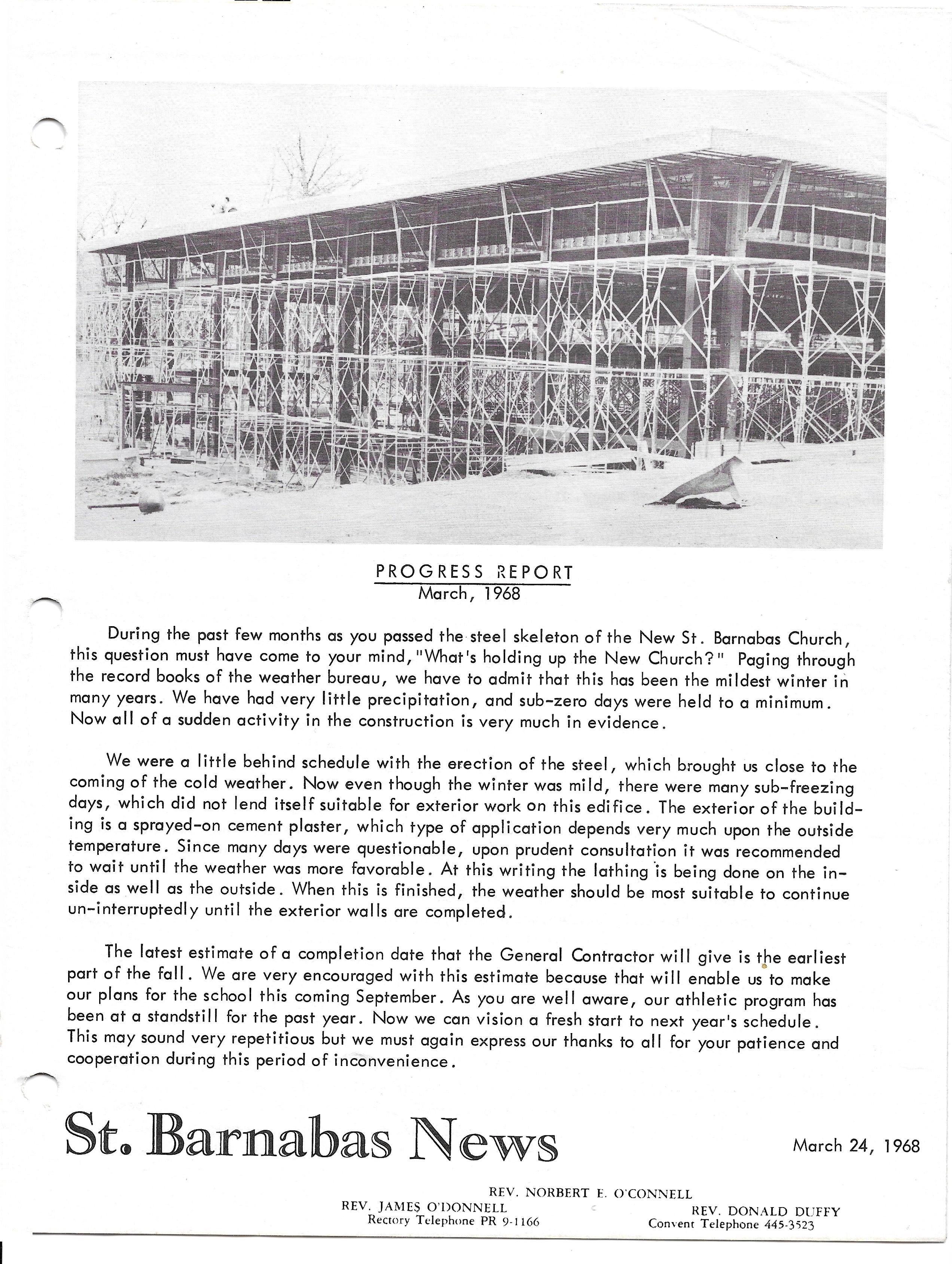Our Heritage
In the early days of this community, a sparse Catholic population extended from 87th Street on the north to the city limits on the south. Washington Heights-Fernwood bordered on the east and the west stretched miles toward what is now known as Palos Hills. The few Catholic families attended Mass in the Longwood convent chapel until the first parish, St. Margaret of Scotland, was started in the early 1880s. In 1923, the parish was divided. George Cardinal Mundelein, then Archbishop of Chicago, appointed the pastor of St. Margaret's, Father Timothy D. Hurley, to organize the new parish. This was not an easy period for the early parishioners of what was to become St. Barnabas. Catholics were a distinct minority, and many of their neighbors did not readily accept a new Catholic parish. Father Hurley was prevented from breaking ground on the site chosen for the new church. Neighborhood residents had successfully petitioned the city to turn the land into a park, now known as Hurley Park.

Undaunted, the Irish-born clergyman authorized the purchase of a parcel of land where the current church is located. Across the street, a large old Victorian home was bought and used as the rectory. On the parcel, the construction of a combination church/school began. Construction was almost finished by the end of the year. At five o'clock Christmas morning 1924, Father Hurley celebrated the first Mass in the new church assisted by Fathers Mulligan and Dolan.
St. Barnabas parish and school continued to grow, along with the Beverly community, as more Catholic families entered the neighborhood. The boundaries, which once seemed so large, were substantially reduced by the formation of St. Christina Church in 1926, St. Cajetan Church in 1927, and Christ the King Church in 1936. Father Hurley became seriously ill in the fall of 1944, and Reverend Norbert E. O'Connell, was named the second pastor on October 7, 1946. As the parish flourished, it became increasingly apparent that larger school facilities were needed. Father O'Connell, with the support of his parishioners, began construction in 1958 of a two-story grammar school at 10121 South Longwood Drive. This building included a combination gymnasium/auditorium and a social hall.
The school was dedicated on April 5, 1959.
The final piece needed to complete the long-range plans for St. Barnabas was the construction of a new and larger church to meet the needs of its expanding community. The lovely modern church we see today was completed by Christmas 1968, at which time the first services were held. After serving the people of St. Barnabas for twenty-four years, during a most impressive period of expansion and growth, Father O'Connell resigned as pastor in 1970 and died in 1973. Father George McKenna was named the pastor in January 1970. He was succeeded by Father Raymond E. Goedert on July 1, 1976. In a booklet that describes the St. Barnabas Catholic Community, Father Goedert wrote, "It is a real privilege for me to be pastor of St. Barnabas. God had endowed the Beverly area with a natural beauty rarely seen in an urban setting. But even more importantly, He has blessed us with people of great faith and devotion to their church and community." In 1987, Father Goedert was asked to become the vicar of clergy. Father Raymond Tillrock became the fifth pastor on July 1, 1987
During his twenty years at St. Barnabas, Fr. Tillrock led the parish in ecumenical dialogue with the local Community of Churches and the Clergy Association. With a vigilant eye on the future, Fr. Tillrock built financial strength for the parish by establishing an Endowment Foundation and brought new life to the parish by embracing a parish renewal and assessment process, thereby restructuring St. Barnabas to allow for more lay involvement and decision making. In 2007, Fr. Raymond Tillrock was reassigned, and on July 1, 2007, Fr. William E. Malloy became the sixth pastor of St. Barnabas Parish. On October 7, 2017 we installed Father Jim Donovan as our seventh pastor.
